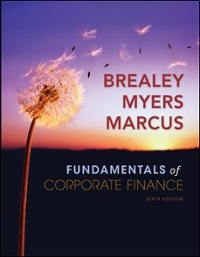29. Interest Rate Risk. Consider two 30-year maturity bonds. Bond A has a coupon rate of 4%,...
Question:
29. Interest Rate Risk. Consider two 30-year maturity bonds. Bond A has a coupon rate of 4%, while bond B has a coupon rate of 12%. Both bonds pay their coupons semiannually. (LO3)
a. Construct an Excel spreadsheet showing the prices of each of these bonds for yields to matu- rity ranging from 2% to 15% at intervals of 1%. Column A should show the yield to maturity (ranging from 2% to 15%), and columns B and C should compute the prices of the two bonds (using Excel's bond price function) at each interest rate.
b. In columns D and E, compute the percentage difference between the bond price and its value when yield to maturity is 8%.
c. Plot the values in columns D and E as a function of the interest rate. Which bond's price is proportionally more sensitive to interest rate changes?
d. Can you explain the result you found in part (c)? Hint: Is there any sense in which a bond that pays a high coupon rate has lower "average" or "effective" maturity than a bond that pays a low coupon rate?
Step by Step Answer:

Fundamentals Of Corporate Finance
ISBN: 9780073382302
6th Edition
Authors: Richard A Brealey, Stewart C Myers, Alan J Marcus




